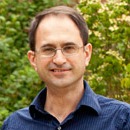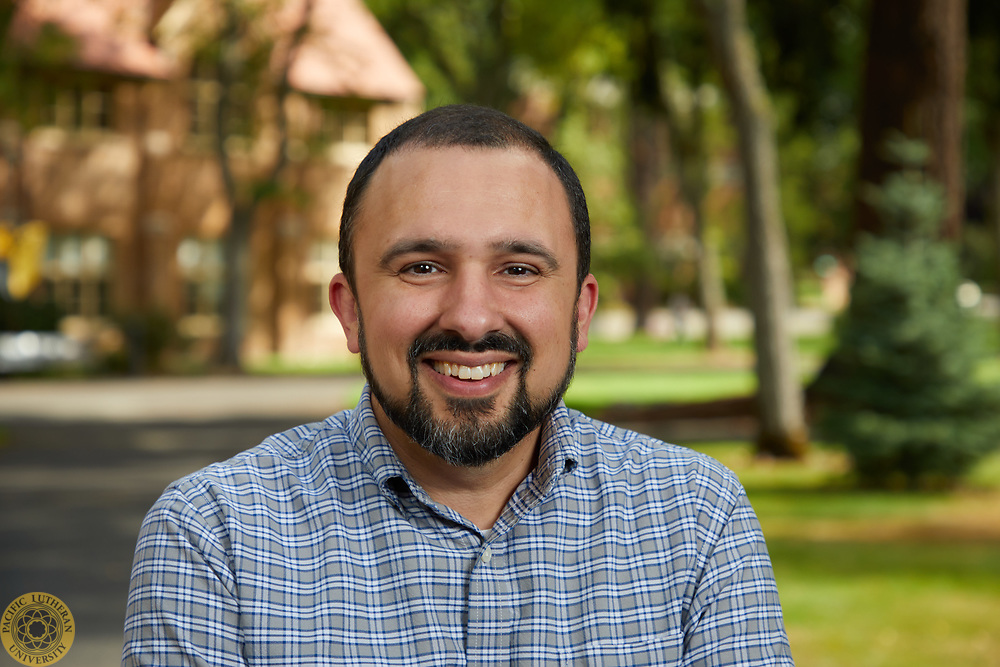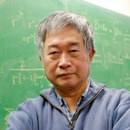Page 8 • (734 results in 0.038 seconds)
-

Associate Professor of Physics | Department of Physics | beg@plu.edu | 253-535-7774
Bogomil Gerganov Associate Professor of Physics he/him/his Phone: 253-535-7774 Email: beg@plu.edu Office Location: Rieke Science Center - 252 Office Hours: (On Campus) Mon: 1:30 pm - 3:00 pm (On Campus) Tue: 2:00 pm - 3:00 pm (On Campus) Wed: 11:30 am - 1:00 pm (Off Campus) Mon - Fri: By Appointment Professional Additional Titles/Roles Engineering Dual-Degree Program Director Education Ph.D., Physics, Cornell University, 2000 M.S., Cornell University, 1997 B.S., Sofia University (Sofia
Office HoursMon: 1:30 pm - 3:00 pmTue: 2:00 pm - 3:00 pmWed: 11:30 am - 1:00 pmMon - Fri: -Area of Emphasis/Expertise -

Assistant Professor of Physics | Department of Physics | oneillsm@plu.edu | 253-535-7007
Sean O’Neill Assistant Professor of Physics he/him/his Phone: 253-535-7007 Email: oneillsm@plu.edu Office Location: Rieke Science Center - 253 Office Hours: (On Campus) Tue: 2:00 pm - 3:00 pm (On Campus) Wed: 1:00 pm - 3:00 pm (On Campus) Mon - Fri: By Appointment Website: https://sites.google.com/a/plu.edu/oneillsm/ Curriculum Vitae: View my CV Professional Education Ph.D., Astrophysics, University of Minnesota, 2007 B.A., University of Chicago, 2000 Areas of Emphasis or Expertise High-energy
Office HoursTue: 2:00 pm - 3:00 pmWed: 1:00 pm - 3:00 pmMon - Fri: -Area of Emphasis/Expertise -

Pacific Lutheran University leaders recently announced two new natural sciences programs. Officially launching in fall 2022, students will be able to pursue a major in applied mathematics and/or a minor in engineering and industry. The applied mathematics major builds upon the existing mathematics courses, incorporates…
studies and adds a permanent mathematical modeling course that challenges students to use mathematic tools to solve real-world problems. “It is really awesome to pair with other science majors to give more math background to support those concepts,” said N. Justice, assistant professor of mathematics. “Such double majors will be set apart and stronger in the job market.” Due to its interdisciplinary nature, the applied mathematics major pairs well with other natural sciences majors such as computer
-
Applying for Graduate School in PhysicsSo you think you want to go to graduate school in physics? Great! This is meant to be a guide to help you think through the process and outline the steps you will need to take as you begin this path. Reflection: Before You Begin Why do you want to go to graduate school? What should you expect in physics graduate school? These are some questions you should begin asking yourself, though you don’t need to have all the answers yet. Below are some resources to
-
Computational science is interdisciplinary by nature, using algorithms, mathematics and computers to analyze and solve scientific and engineering problems. The DOE CSGF’s unique program of study helps nurture this crosscutting foundation. The result: scientists who may reside in science, mathematics, engineering or computer science departments…
computing and mathematical methods. Although their pursuits vary widely, the DOE CSGF helps these computational scientists develop a sense of community that’s often difficult to find in a single academic department. It starts with practicum assignments at DOE laboratories, where interdisciplinary teams conduct research in ways far different than in academic departments. DOE CSGF Science & Engineering Track fellows use math and computers to conduct doctoral research in many fields, including: Aeronautics
-
Computational science is interdisciplinary by nature, using algorithms, mathematics and computers to analyze and solve scientific and engineering problems. The DOE CSGF’s unique program of study helps nurture this crosscutting foundation. The result: scientists who may reside in science, mathematics, engineering or computer science departments…
computing and mathematical methods. Although their pursuits vary widely, the DOE CSGF helps these computational scientists develop a sense of community that’s often difficult to find in a single academic department. It starts with practicum assignments at DOE laboratories, where interdisciplinary teams conduct research in ways far different than in academic departments. DOE CSGF Science & Engineering Track fellows use math and computers to conduct doctoral research in many fields, including: Aeronautics
-
Computational science is interdisciplinary by nature, using algorithms, mathematics and computers to analyze and solve scientific and engineering problems. The DOE CSGF’s unique program of study helps nurture this crosscutting foundation. The result: scientists who may reside in science, mathematics, engineering or computer science departments…
computing and mathematical methods. Although their pursuits vary widely, the DOE CSGF helps these computational scientists develop a sense of community that’s often difficult to find in a single academic department. It starts with practicum assignments at DOE laboratories, where interdisciplinary teams conduct research in ways far different than in academic departments. DOE CSGF Science & Engineering Track fellows use math and computers to conduct doctoral research in many fields, including: Aeronautics
-

Professor Emeritus of Physics | Department of Physics | yiuca@plu.edu | 253-535-8487 | Learn more about Dr.
Chang-li Yiu Professor Emeritus of Physics Phone: 253-535-8487 Email: yiuca@plu.edu Status:Emeritus Curriculum Vitae: View my CV Professional Biography Education Ph.D., Columbia University, 1972 M.S., Tsinghua University, 1965 B.S., Tunghai University, 1962 Biography Learn more about Dr. Yiu’s perspective on physics through the spring 2008 edition of PLU’s Scene publication, specifically in the “Best of Scene.”
-
20 semester hours, including: EDUC 205: Multicultural Perspectives in the Classroom (4) NSCI 350: STEM Education Partnership (4) In addition, STEM Education minors must complete a minimum of 12
Partnership (4) In addition, STEM Education minors must complete a minimum of 12 semester hours in the following areas: Biology & Chemistry (4) 4 semester hours Choose from the following courses: BIOL 225: Molecules, Cells, and Organisms BIOL 226: Genes, Evolution, Diversity, and Ecology CHEM 104: Environmental Chemistry CHEM 115: General Chemistry I CHEM 116: General Chemistry II Geosciences & Physics (4) 4 semester hours Choose from the following courses: GEOS 102: General Oceanography GEOS 103
-
Learning Outcomes for BS and BA in Mathematics (BSM, BA) (Developed with reference to the MAA’s 2015 Curriculum Guide to Majors in the Mathematical Sciences.
Program Learning OutcomesLearning Outcomes for BS and BA in Mathematics (BSM, BA) (Developed with reference to the MAA’s 2015 Curriculum Guide to Majors in the Mathematical Sciences.) Communication: Be able to read, interpret, write about, and talk about mathematics. Computation: Develop computational, algorithmic, and technological problem-solving fluency. Disciplinary Citizenship: Develop collaborative skills, independence, perseverance, and experience with open-ended inquiry. A. Abstraction
Do you have any feedback for us? If so, feel free to use our Feedback Form.


